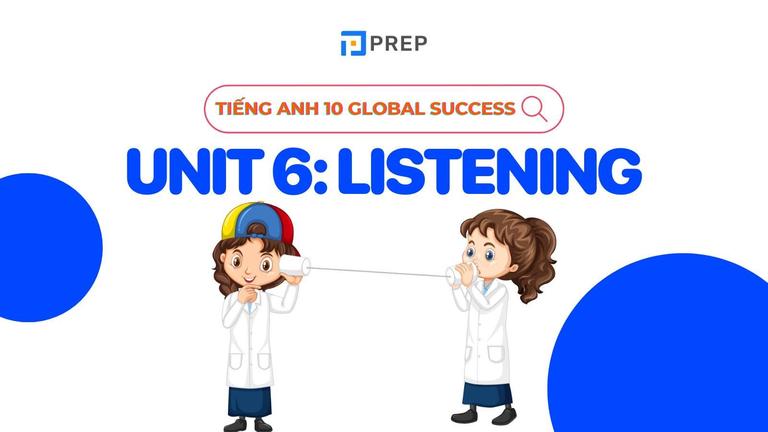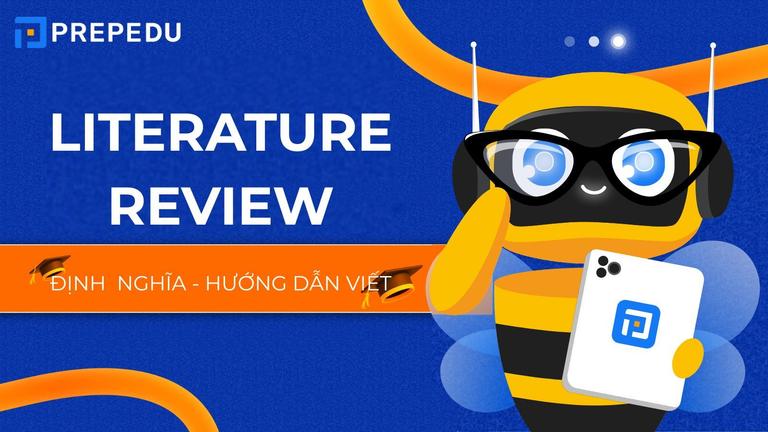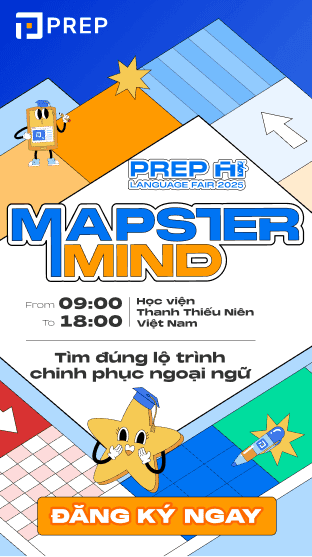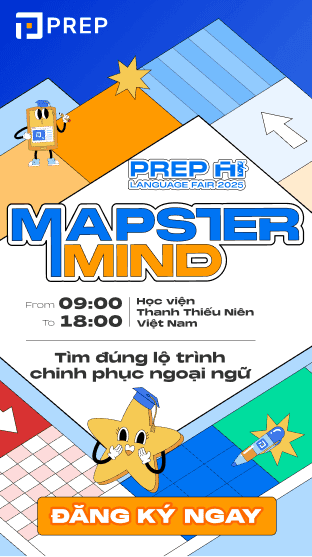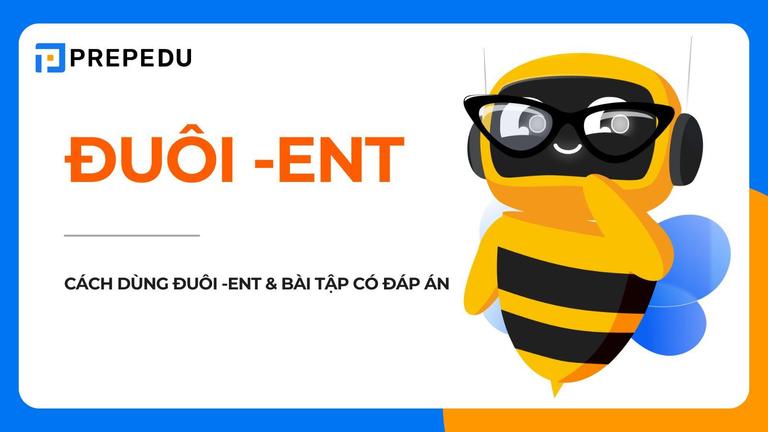Bài mẫu IELTS Speaking Part 2, 3: Describe a wild animal
Describe a wild animal - đề bài IELTS Speaking Part 2 vô cùng quen thuộc trong kỳ thi Speaking. Sau đây là dàn bài, idea bài mẫu, cách take-note trong 1 phút, sample Speaking chi tiết và một số từ vựng hay ho đã được sử dụng. Tham khảo ngay bài viết dưới đây để học luyện thi IELTS Speaking tại nhà hiệu quả. Và đừng quên, bài mẫu này cũng dễ dàng áp dụng cho các đề bài như: Describe a wild animal from your country/ in Vietnam” hay “Describe a wild animal that you have seen” bạn nhé!
[caption id="attachment_14515" align="aligncenter" width="1080"] Bài mẫu IELTS Speaking Part 2 + 3 chủ đề “Describe a wild animal”[/caption]
Bài mẫu IELTS Speaking Part 2 + 3 chủ đề “Describe a wild animal”[/caption]
I. Bài mẫu IELTS Speaking Part 2 chủ đề: Describe a wild animal
1. Đề bài: Describe a wild animal
Describe a wild animal. You should say:
- what it looks like
- what it likes to eat or do
- where it lives
And explain why you like this animal.
[caption id="attachment_44667" align="aligncenter" width="1553"] Đề bài: Describe a wild animal[/caption]
Đề bài: Describe a wild animal[/caption]
2. Dàn bài Part 2
2.1. Ý tưởng bài mẫu (tiếng Việt)
Đề bài Describe a wild animal yêu cầu miêu tả một loài động vật hoang dã bất kỳ. Vì vậy, các bạn có thể nêu ra tên một loài động vật ưa thích của các bạn, hoặc một loài động vật hoang dã bất kỳ nào mà các bạn biết đến. Một số thông tin chính cần được đưa ra về các loài động vật hoang dã nói chung:
- Nó trông như thế nào?
- Nó thích ăn gì và làm gì?
- Nó sống ở đâu?
- Giải thích vì sao bạn thích/ đề cập loài động vật này.
- Bước đầu, để khiến bài nói dễ dàng và thuyết phục hơn, hãy chọn những loài động vật hoang dã quen thuộc với mình bởi bản thân đã có những trải nghiệm nhất định.
- Với câu hỏi về ngoại hình trong đề bài Describe a wild animal, các bạn có thể đưa ra một số thông tin chung như kích cỡ, chiều cao, cân nặng, màu sắc, các bộ phận/ đặc điểm nổi bật của loài động vật đó.
- Với câu hỏi thức ăn trong đề bài Describe a wild animal, các bạn có thể chia ra thành 2 loại là động vật ăn thịt (carnivore) và động vật ăn cỏ (herbivore) và nêu ra một số loại thức ăn cụ thể mà chúng thường ăn.
- Về các hoạt động, các bạn có thể nêu ra một số các hoạt động thường ngày của loài động vật đó mà chúng ta biết. Với phần này, hãy liên hệ một chút tới 2 loại động vật ăn thịt và ăn cỏ mình đã chia ra ở trên (Ví dụ: với động vật ăn thịt, chúng sẽ dành phần lớn thời gian để rình săn bắt mồi).
- Tiếp đến, bạn cần đưa ra các thông tin về nơi ở của loài động vật này trong đề bài Describe a wild animal. Ở phần này, bạn không cần nói dài dòng, chỉ nên kết thúc trong 1 - 2 câu mà thôi. Các bạn có thể liệt kê một số danh từ chỉ địa điểm mà các loài động vật này sống.
- Cuối cùng, ta cần phân tích lý do vì sao mình yêu thích hoặc đề cập đến loài động vật hoang dã này. Để kết bài Describe a wild animal, bạn có thể đưa ra dự định hoặc mong muốn/ cảm xúc của bản thân.
2.2. Take note trong 1 phút (tiếng Anh)
| Appearance |
|
| Food & Activities |
|
| Habitats |
|
| Why? |
|
3. Sample Speaking: Describe a wild animal
Dưới đây là bài mẫu IELTS Speaking Part 2 chủ đề Describe a wild animal được biên soạn bởi các thầy cô giáo tạ PREP. Tham khảo ngay bài viết dưới đây để học ielts online hiệu quả nhé
Cùng nghe Podcast bài mẫu IELTS Speaking Part 2 - Describe a wild animal:
Today I am going to tell you about my perennial favorite wild animal. To be honest, I would consider myself a bit of a nature nerd, and naturally, I got particularly excited when talking about animals, one of which is the elephant.
[prep_auth_content]In terms of appearance, elephants are recorded as the current largest living land animal, characterized by their grayish body, long trunks, columnar legs, and a massive head with flat ears. An average Asian elephant which can also be found in Vietnam, can weigh up to 6000 kg and stands 3 to 4 meters at the shoulder. Such animals are mostly found in savannas, grasslands, forests, and deserts. But let's be honest, the most common way where one can meet a real-life elephant is in the zoo, sadly.
Another thing about this kind of animal is that it's a herbivore which means they feed primarily on different plants, ranging from grasses and fruits to roots. An adult elephant can consume about 100 kg of food and 100 liters of water daily. Elephants are no predators; hence their daily activities are pretty chill. They are considered highly intelligent and social animals who would spend their day socializing, playing water games, or even playing football.
All in all, their energy and friendliness are what I got hooked on at first. Despite my poor interaction with elephants, my love and interest for them grow beyond the zoo.[/prep_auth_content]
Dưới đây là một số từ vựng hay đã được sử dụng trong bài mẫu IELTS Speaking Part 2 Describe a wild animal:
- Perennial favorite: thứ luôn được ưa thích
- Nature nerd: người yêu thích tự nhiên (Noun + nerd: người yêu thích…)
- Characterized by: được thể hiện/ mô tả thông qua
- Trunk (noun): vòi voi
- Columnar (adj): giống như cột nhà
- Herbivore (noun): động vật ăn cỏ
- Feed on = eat (verb): ăn
- Get hooked on (sth): cực kỳ ưa thích/ bị thu hút bởi cái gì
II. Câu trả lời mẫu IELTS Speaking Part 3: Protecting animals
Cùng nghe Podcast bài mẫu IELTS Speaking Part 3 - Protecting animals:
1. Do you think people treat wild animals well in your country?
As much as I care about wildlife, I’m no expert in this. The problem of protecting wild animals and their habitats has just emerged in recent years among Vietnamese people. Despite being taught various lessons about preserving and protecting wildlife, young people’s experience with such ideas is still very vague since their only interactions with wild creatures are through TV screens.
Or another way where we can learn more about these animals is at the zoo, which I personally believe is prisoning rather than protecting them.
- Be no expert in: không phải là chuyên gia về lĩnh vực gì đó
- Emerge (v): nổi lên
- Preserve (v): bảo tồn
- Vague (a): mơ hồ
- Prison (v): giam cầm
2. Do you think it is important to spend money on protecting rare or endangered species?
[prep_auth_content]By all means. Animals in general and endangered ones in particular play a vital role in maintaining ecological balance. If rare species are to be extinct, the whole food chain will be disrupted as this type of animal depends closely on the other.
Without one, the disappearance of this kind may eventually lead to many others related to the food chain, which could be seen as a global catastrophe. As a result, much money must be spent on preserving and breeding such endangered species.[/prep_auth_content]
- By all means = definitely yes
- Ecological balance: sự cân bằng sinh thái
- Extinct (a): tuyệt chủng
- Food chain: chuỗi thức ăn
- Disrupt (v): phá vỡ
- Catastrophe (n): thảm họa
- Breed (v): phối giống
3. What measures might be taken to protect endangered species from extinction?
[prep_auth_content]There are a number of actions that can be taken to protect the creatures facing the threat of extinction. The first step involves all citizens actively supporting and participating in campaigns against illegal hunting and poaching, which are believed to be the leading cause of the problem.
At the same time, in addition to significant investments for conserving and breeding wild animals, the government should also introduce stricter regulations that impose proper punishments on those who engage in illegal poaching activities.[/prep_auth_content]
- Extinction (n): sự tuyệt chủng
- Campaign (n): chiến dịch
- Illegal (a): bất hợp pháp
- Poaching (v): săn trộm
- Leading = main (a): chính
- Conserve (v) = preserve (v): bảo tồn
- Introduce regulation: đưa ra/ đặt ra quy định
- Strict (a): nghiêm ngặt
- Impose (punishment on): đặt ra (hình phạt đối với)
Trên đây là bài mẫu IELTS Speaking Part 2 + 3 đề bài Describe a wild animal chi tiết nhất được viết bởi thầy cô giáo tại PREP. Vậy nên, tham khảo ngay bài viết này để ôn luyện thi IELTS thật hiệu quả bạn nhé!

Chào bạn! Mình là Hiền Hoàng, hiện đang đảm nhận vai trò quản trị nội dung sản phẩm tại Blog của website prepedu.com.
Với hơn 5 năm tự học các ngoại ngữ như tiếng Anh, tiếng Trung và ôn luyện một số kỳ thi IELTS, TOEIC, HSK, mình đã tự đúc rút được nhiều kinh nghiệm để hỗ trợ hàng nghìn người đang gặp khó khăn trong việc học ngoại ngữ. Hy vọng rằng những chia sẻ phía trên sẽ giúp ích cho bạn trong quá trình tự ôn luyện thi hiệu quả tại nhà!
Bình luận
Nội dung premium
Xem tất cảLộ trình cá nhân hoá
Có thể bạn quan tâm
Kết nối với Prep

MSDN: 0109817671.
Địa chỉ liên hệ: Tòa nhà Vinaconex, 34 Láng Hạ, phường Láng, TP Hà Nội.
Trung tâm CSKH tại HN: Lô 21 C2 Khu đô thị Nam Trung Yên, phường Yên Hòa, TP Hà Nội.
Trung tâm CSKH tại HCM: 288 Pasteur, Phường Xuân Hòa, TP Hồ Chí Minh
Trụ sở Công ty: Số nhà 20, ngách 234/35 đường Hoàng Quốc Việt, phường Nghĩa Đô, TP Hà Nội.
Phòng luyện ảo - Trải nghiệm thực tế - Công nghệ hàng đầu.
Hotline: 0931 42 8899.
Trụ sở Công ty: Số nhà 20, ngách 234/35 đường Hoàng Quốc Việt, phường Nghĩa Đô, TP Hà Nội.
Giấy chứng nhận hoạt động đào tạo, bồi dưỡng số 1309/QĐ-SGDĐT ngày 31 tháng 07 năm 2023 do Sở Giáo dục và Đào tạo Hà Nội cấp.
